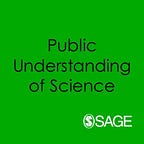Science and Religion in India: Beyond Disenchantment
By Hester Du Plessis
Though the publication does not provide a deep understanding of the relation and disenchantment between science and the various religions, the interviews and personal opinions will be of interest to science communicators.
As a country with interesting debates around the role of science in society, India continues to challenge and pique our interest in its religious complexity and its development of science communication inspired by Pandit Nehru’s notion of promoting a scientific temper.
India’s socio-religious complexity is embedded in the principles and rituals of the Vedic Schools, Buddhism, Jainism, Sikhism, Hinduism and Islam. This interest feeds into a number of publications that speculate about the inter-dependence of science and religion. It is a sustained challenge to try to understand how India proclaims itself a secular state while, at the same time, claiming to find scientific foundations within religions.
This book offers an ethnographic study of the complexity of science and religion within an Indian cultural framework. Interviews were conducted with the staff at a science laboratory during 2012, mostly during work-breaks at the local cafeteria. This fairly insular report on perceptions about science and religion within a restricted laboratory environment offers some insight into the co-existence of science and religion in this orthodox society. What transpires is that, while India manages to engage in high-level science research, the general population functions under a judicial system that is merged with a dominant religion (Hinduism) and a socially hierarchical caste system.
Measured against the global rise of a rational worldview fueled by adoption of scientific method, it is easy to assume that the existential security of Indian society is probably the dominant driving force behind participation in religion, especially when the two dominant axioms within this context, namely security and cultural traditions, are discussed. In addition, there are many challenges to address, such as the role of superstition, the advantages of religious-driven political parties as well as the economic significance of sites of religion practices in India. The book’s promise to move ‘beyond disenchantment’ in the Indian context was, therefore, interesting, but over-ambitious.
The author’s main argument is based on the idea that the relation between science and religion should be considered as a European construct with conceptual limitations in the Indian context. The claim that a European worldview, with its culture dominated by rationality and the development of a scientific method, forms the reference point for measuring relationships between science and religion, could and should, however, be challenged. In addition, the observation that the Orientalist construct must be seen as an obstacle rather than an effort to bridge the gap between the Islamic world and the West does not persuade this reader.
The publication does not adequately engage with the nuances of secular politics, site-specific traditional cultural confines, the superstitious practices of astrology and the challenge to maintain the culturally embedded different religions and various gods worshipped in India. The ethnographic observations within a specific lab in India remain bound within a limiting geographic and ethnographic observation.
Some interesting information, however, provided reason for reflection. One example is a brief mention of fear (living in fear, being afraid) made by one of the atheist evolutionary biologists in the lab. This brief mention brings to mind additional aspects to science and religion relations. Fear, or the so-called culture of fear, and the reality of ever-present violence are all neglected social-binding factors, facilitating religion and superstition.
This publication remains focused on Hinduism as mainstream religion. There is no provision in the Indian constitution drafted after Independence in 1947 that gives direction to the state to remain neutral on religious issues, nor does the Constitution remotely suggest that religion in this polytheist country is to be the foundation or source of state law, yet the reality of the Hindu-based (Hindutva) dominance in politics is not easy to overlook. This is not discussed in the publication, probably due to a focus on discussions about personal choice rather than on the social reality of conflict between science and Indian history, culture and religion in a broader context.
There is no doubt that India has cultural traditions which complicate the relation between science and religion. There is always a need to engage in an in-depth analysis of the cultural and political role of caste and caste privilege in an Indian context. In addition, it will be interesting to find some explanation for the close bond between religion as crutch for political power and the endemic practices of superstition, belief in omens and karma-based rituals. Though the publication does not provide a deep understanding of the relation and disenchantment between science and the various religions, the interviews and personal opinions will be of interest to science communicators.
Hester du Plessis is Research Associate in the office of the Dean of Humanities, University of Pretoria, South Africa. She has worked on projects in collaboration with the National Institute of Science, Technology and Development Studies in India and previously held a Research Chair in Design Education and Innovation at the National Institute of Design, Ahmedabad, Gujarat, India. Her recent publications include a report on science advice in Africa and (with J. Le Marec, co-editor): Savoirs de la Précarité: knowledge from precarity (Éditions des Archives Contemporaines, 2020).
